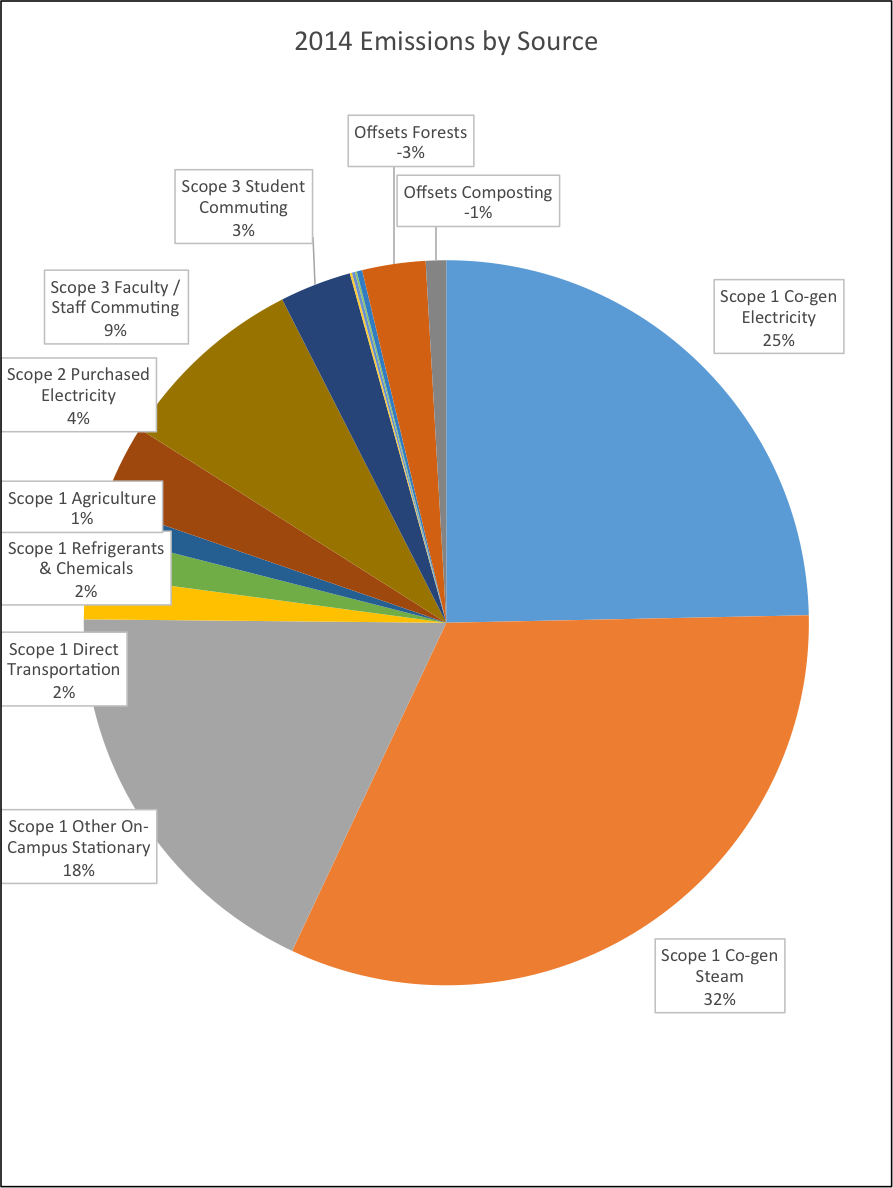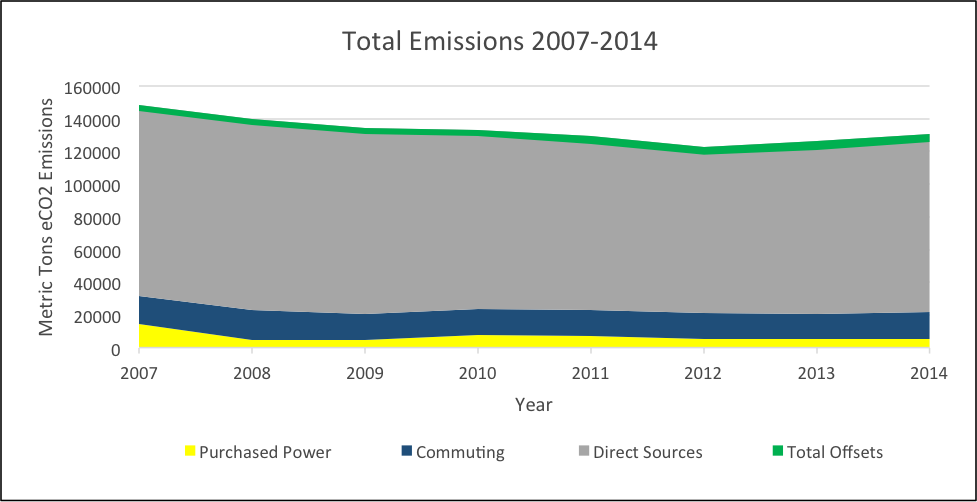On March 25, 2008, University of Connecticut President Michael Hogan signed the American College & University Presidents Climate Commitment (ACUPCC) promising that the university would aim for carbon neutrality by 2050. This means that the university would have to reduce greenhouse gas emissions, particularly carbon dioxide, through new projects and sustainable initiatives.
UConn tracks Scope 1, 2, and 3* emissions, and calculates them with the help of the widely used University of New Hampshire Campus Carbon Calculator (CCC) to try to reach this goal. Compiling information to calculate carbon emissions is very involved and requires that the Office of Environmental Policy collaborate with many departments around campus.
So what are these scopes of emission sources?
Scope 1 – direct GHG emissions from sources that are owned or controlled by the entity, including fossil fuels burned on site, emissions from entity-owned or entity-leased vehicles, and other direct sources.
Scope 2 – indirect GHG emissions resulting from the generation of electricity, heating and cooling, or steam generated off site but purchased by the entity.
Scope 3 – indirect GHG emissions from sources not owned or directly controlled by the entity but related to the entity’s activities, such as employee travel and commuting, contracted solid waste disposal, and contracted wastewater treatment.
*UConn does not fully track Scope 3 Emissions. Certain sources, such as sponsored air travel, are not calculated due to inability to adequately acquire data. The following data are approximate, calculated using the University of New Hampshire CCC.
How much emissions come from each source at UConn?
Since the signing of this agreement, UConn has finished many projects to reduce emissions. These include over 100 re-lamping projects, and enhancing building energy efficiency through retrocommissioning.
So, where are we now?
Despite extensive new building projects and very cold winters, UConn has made emissions progress since 2007. When it is exceptionally cold, the campus’s great heating demands require natural gas curtailment days, during which the Co-Generation plant, our campus’s major energy supplier, uses oil instead of natural gas. Overall, key emissions take-aways include:
- 1% decrease since 2007 with curtailment included
- 9% decrease since 2007 if curtailment never happened
- New Building Construction has accounted for Direct Source Emissions increase in recent years
- Air travel is not included in Scope 3 emissions due to inconsistencies in record keeping
- Scope 3 Emissions, primarily Student/Faculty Commuting numbers, were based off of consistent methodology over the years, whereas permit numbers were used to estimate commuting mileage
- The Central Utility Plant is UConn’s primary Scope 1 Emissions source
- Scope 2 Emissions consisted only of purchased electricity from ConEd
The OEP is always looking for more information to better track GHG emissions, but overall signs of emissions progress are promising. Emissions are the primary reason for climate change, so any reduction counts.
-Chris